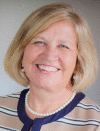This special issue of AJPH on nursing and public health celebrates a long history of nursing aimed to protect, promote, and improve public health. According to a 1926 AJPH editorial, 1885 may have been the first year a graduate nurse was employed in a public health setting (https://bit.ly/37ZtUl0). Nurses were actively involved in the American Public Health Association (APHA), formally launching the APHA Public Health Nursing section of AJPH a century ago, in 1922.
AJPH has long acknowledged, documented, and celebrated the importance of nursing to public health. A literature search in PubMed found that the first AJPH article about public health nurses was published in 1913. In this article, the health nurse was proclaimed the “most essential single factor” (https://bit.ly/3LuiAek; p350) for promoting and improving public health. Perusal of 1913 AJPH titles found topics related to many of the articles in this Nursing and Public Health supplement: various vulnerable populations (infants, children, higher age groups), social evil in relation to health, sex hygiene, the freezing of vaccines, and numerous air washing and other environmental health topics.
A 1924 census of public health nursing reported 3032 agencies doing public health nursing, 78% of which employed their first public health nurse in 1914 or later. AJPH editors noted, “This stock taking of public health nursing in the United States shows what has been done and also what there is still to do to make public health nursing available to all who want and need it” (https://bit.ly/37ZtUl0; p823). During the 1920s, AJPH articles began to appear with such topics as mental hygiene, teaching children about wholesome foods, the injurious effects of tobacco on youths, climate, racism (“the color problem”), public health nursing qualifications and education, the interprofessional collaboration among public health disciplines including nursing, the relation of the public health nurse to the practicing physician, public health nomenclature, and public health nursing effectiveness research (https://bit.ly/3PvLcae). One author asked, “Is the public health nurse a carrier of infection?” (https://bit.ly/3wAF5sB) which, in the COVID-19 era, is once again an important topic.
Since 1913, AJPH has published 14 articles per year on average related to nursing, with yearly numbers increasing over time. In 1923, there was a regular column titled “Public Health Nursing” by Annie M. Brainerd. By far, the greatest number of articles in AJPH related to nursing in a year was 172 in 2021; 22 have already been published to date as we write this editorial for the Nursing and Public Health supplement in 2022.
We are honored to serve as guest editors of this special issue that builds on more than a century of AJPH recognition of the multifaceted role and crucial service of nurses and provides a glimpse of nursing’s thought leadership, research, education, and practice in the 21st century. Given our proud history, unique disciplinary insights, workforce presence, and leadership capacity, we expect the nurse as innovator and leader, trusted team member, and skilled practitioner will continue wholeheartedly to solve pressing public health problems of today and the future.
Will these same public health topics and global health priorities persist for the next century? Or will technological, genomic, precision health, and pharmacological solutions shift these conversations? To those of you who are our readers 100 years from now, we hope you perceive that this special issue expresses our passion for nursing and public health, the urgency with which we strove to address the immense challenges of our day, and the legacy we upheld as a foundation for your anticipated service, education, and research. We are optimistic that in the future nurses will continue working together with colleagues of all disciplines, making real progress toward a shared vision of health for all.
9. Years Ago
Safety of Aspiration Abortion Performed by Nurse Practitioners, Certified Nurse Midwives, and Physician Assistants Under a California Legal Waiver
Because the average cost of a second-trimester abortion is substantially higher than that of a first-trimester procedure, shifting the population distribution of abortions to earlier gestations would result in safer, less costly care. Increasing the types of health care professionals involved in abortion care is one way to reduce this health care disparity. . . . We found that the care provided by newly trained NPs, CNMs, and PAs was not inferior to that provided by experienced physicians. . . . Moreover, on the basis of findings in other studies, we expect this risk difference to narrow further over time. . . . As the demand for health care providers increases under US health care reform, one part of the solution for all health care, including abortion care, is to allow all qualified professionals to perform clinical care to the fullest extent of their education and competency.
From AJPH, March 2013, p. 458–460, passim
46. Years Ago
Nurse Practitioners and Nursing Practice
The concept of expanded roles for professional nurses is not new. . . . Undoubtedly, many innovative changes in the system of nursing education are required to fully implement the concept of nurse practitioners. Undergraduate, graduate, and continuing nursing education programs need to focus upon the preparation of nurse practitioners for expanded roles. The emphasis on clinical nursing in graduate education that is based on an essential core of knowledge of the science and practice of nursing is definitely a movement in the right direction. One thing is certain—as the nurse practitioner is recognized and accepted for his or her needed contributions to the health care delivery system—there is increased hope of achieving improved health care for all Americans.
From AJPH, March 1976, pp. 245–246, passim
Biographies



Contributor Information
Karen A. Monsen, University of Minnesota Twin Cities.
Catherine M. Waters, University of California, San Francisco.
Linda A. McCauley, Emory University, Atlanta, GA; Guest Editors.


